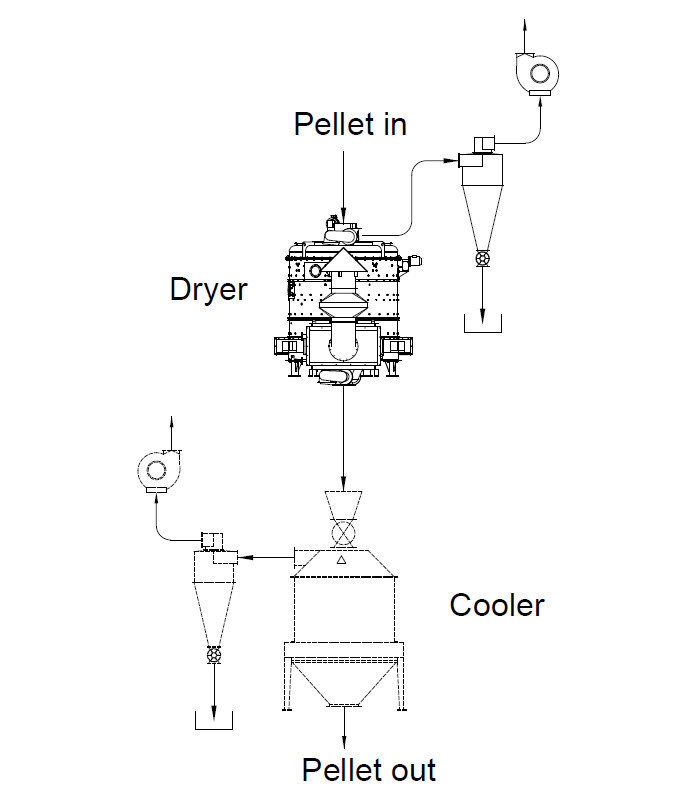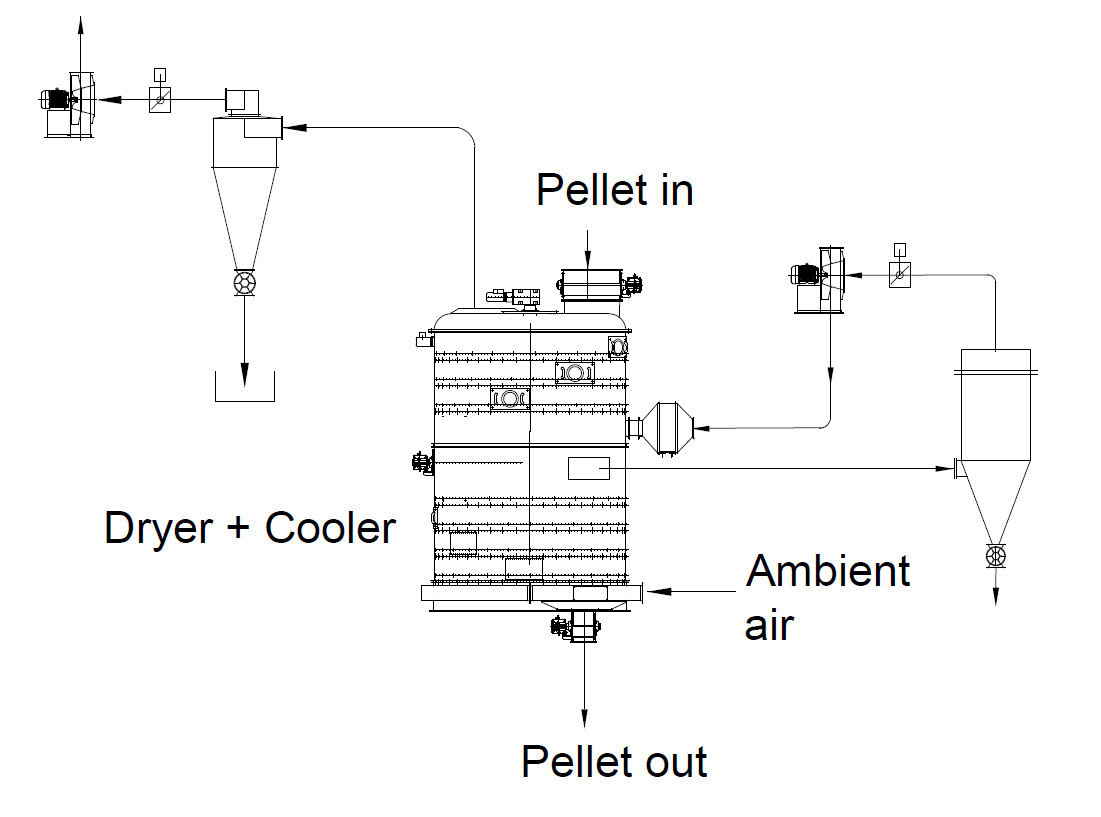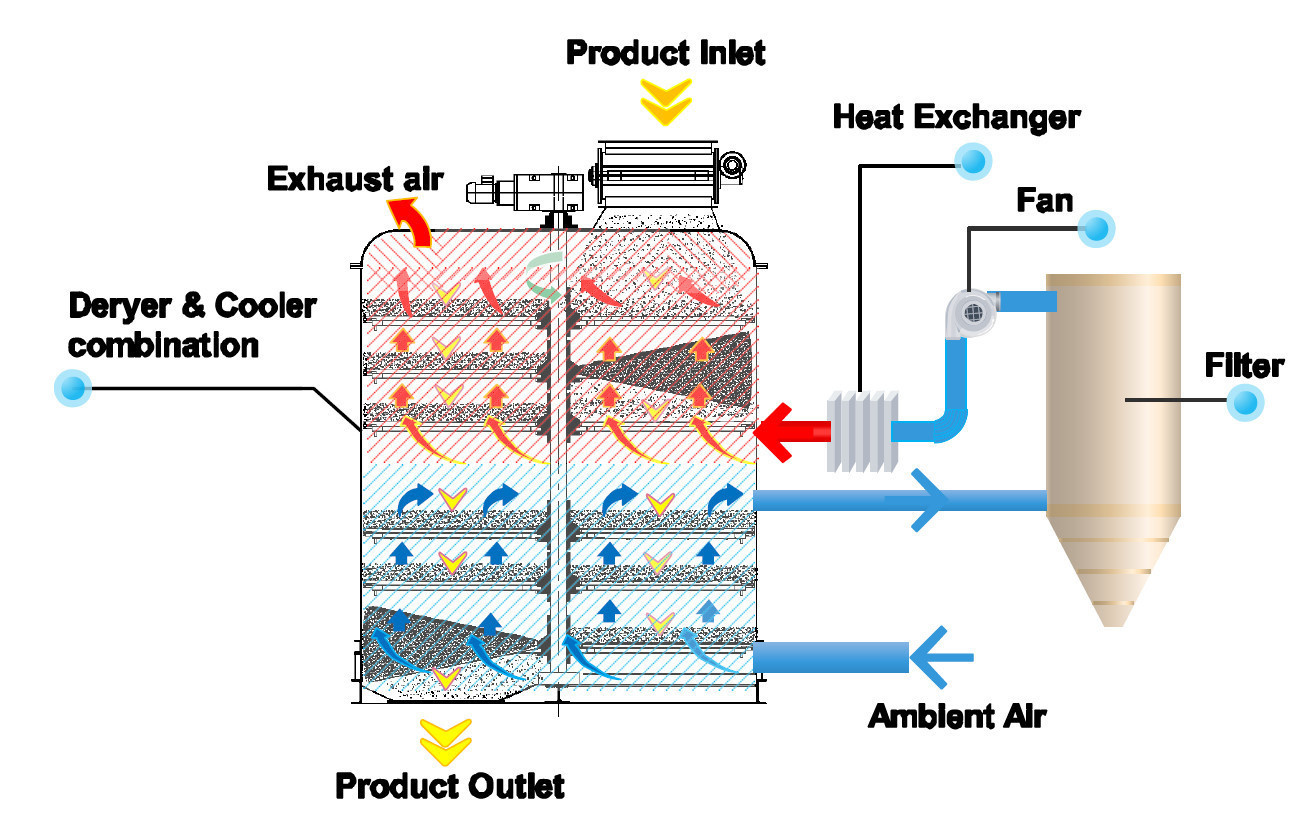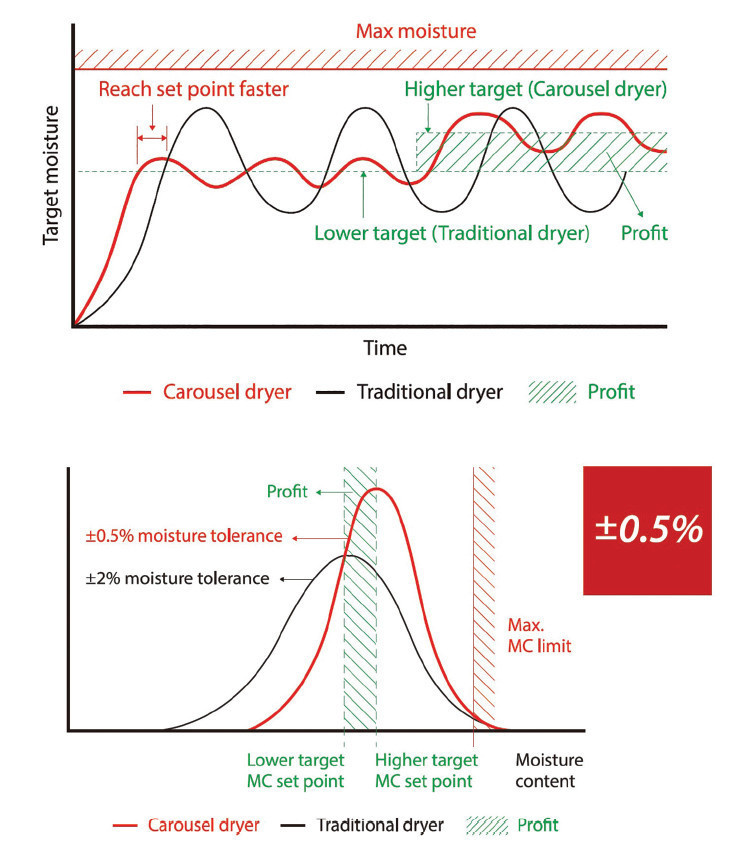New way of drying shrimp feed
This article is published in Aquafeed: Advances in Processing & Formulation Vol. 12 Issue 2 2020
New Way of Drying Shrimp Feed
In a modern shrimp feed pelleting process increasingly more liquids are
added into the mash feed. This in combination with long-term steam
conditioning is increasing gelatinization and water stability for better
end-product quality. Recipe cost optimization can be limited if there
are drying capacity restrictions. In a lot of situations, moisture
removal with only cooling is not enough anymore and an extra drying step
is required. Moisture control is more and more crucial for quality and
cost price reasons.
In traditional shrimp feed processing, there is a separate machine for
drying and cooling, the products are dropped from the pellets mill/post
conditioner into the dryer for moisture removal, then into the cooler to
cool down the product with ambient air. Moisture control is done by
checking the product after the dryer and corrections by measurements of
finished product moistures. The process is shown in figure 1.

Figure 1. Traditional dryer and cooler flow chart

Figure 2. Combination of the dryer and cooler flow chart
Integrating drying and cooler in one solution
New in the market is the carousal dryer and cooler combination, with a
unique solution for both energy efficiency and precise moisture
control.
Optimizing moisture control is a lot easier if the retention time is
short and the dryer and cooler have a first in first out (FIFO)
principal. Plus the moisture can be controlled directly after the
cooler so the impact of more or less water evaporation in the cooler
is already taken care of in the total moisture control cycle.
Therefore integration of the dryer and cooler into one compact machine
with a FIFO discharge principal like the carousel dryer will give an
outstanding control performance. The flow chart is shown in figure 2.
The carousel working principle
The complete unit consists of an upper drying zone and a lower cooling
zone. The product comes in through a rotary seal and going round in the
dryer. After nearly one revolution, the product is gently discharged and
mixing onto the next lower tray. This process is repeated until the
product is discharged from the drying zone into the cooling zone and the
product drops from the last tray into the outlet. Where a rotary seal is
avoiding air leaking.
Ambient air is cooling the product, filtering, and heating is used as
drying air for the upper section. Because of the multiple tumbling and
optimal air use in the round dryer, the drying process is extremely
efficient resulting in a low exhaust air temperature. Figure 3 indicates
the products and airflow scheme.

Figure 3. Dryer cooler combination product and airflow scheme.
Improving product moisture control
Managing the temperature and moisture content of the finished product
is the main task for the drying and cooling process. However, when the
feed is overdried this causes material loss as well as extra energy
consumption. When the feed is too wet the product will have a higher
risk of quality degradation and mold growth.
A carousel dryer is working according to the first in first out (FIFO)
characteristic. Having the product circling round in a steady and
controlled airflow all the products will get the same heat treatment
and retention time. Combine this with a unique and easy control
system, providing real-time monitoring and modification of the drying
parameters such as drying air temperature air volume, and retention
time.
Because the carousel dryer is giving a uniform and constant moisture
level the target average moisture can be optimized saving energy and
saving raw materials. Figure 4 shows the moisture uniformity
comparison between the carousal dryer and traditional dryer

Figure 4. Moisture uniformity comparison between the carousel dryer and traditional dryer

Figure 5. Dryer cooler combination layout
Improving energy efficiency
The drying and cooling process accounts for a significant part of the
overall energy consumption, rising energy costs, and sustainability
awareness regarding energy consumption have driven feed manufacturers to
request further support to improve their drying and cooling functions.
To maximize energy efficiency we have to look into:
1) Maximum use
of warm product energy
2) Minimize the amount of water evaporation
3) Minimize energy loss with the exhaust air.
By using the cooling air as makeup air into the dryer we reuse the
product energy and limit the amount of exhaust air. Due to the high
drying efficiency, the exhaust air temperature is also low reducing the
loss of energy by the already low exhaust air volume. Low exhaust air
volumes will also reduce the cost of odor treatment if required.
Reducing the space required
Process improvement or an upgrade in capacity is asking for the
introduction of new equipment into the facility. Space limitations have
to be overcome.
The carousel dryer is already more compact than a normally used dryer,
the dryer - cooler combined design has even more space requirement
advantages as shown in figure 5, in the limited available space the
cooler was positioned high in the building. The carousel dryer-cooler
positioned under the post conditioner is avoiding the hot product
transport and a lot of air ducting.
Potential savings
For example, using cooling air to make up air for the dryer. Assume the
the temperature differential between the ambient and cooler exhaust air
is 25°C you save up to 30 kg/t steam. At the same time, you will reduce
the amount of exhaust air by 50%, reducing odor treatment cost
significantly if required.
Getting a better moisture control for example 0.5% is saving not only
about 10 kg/t steam consumption in the dryer but even more important
saving 0.5% raw materials cost and have a 0.5% higher output capacity.

